Masakazu Iwamura
Word-level Sign Language Recognition with Multi-stream Neural Networks Focusing on Local Regions
Jun 30, 2021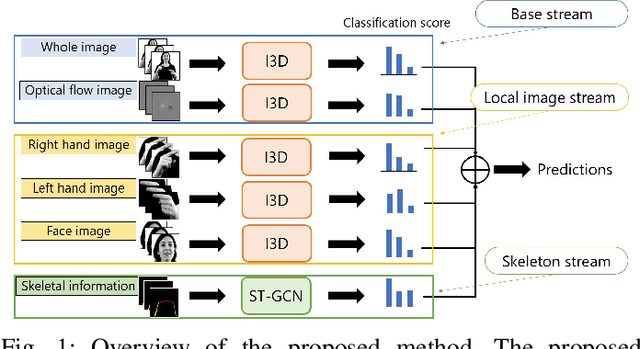
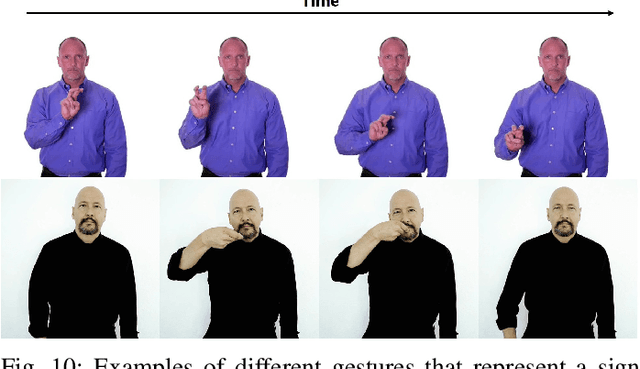
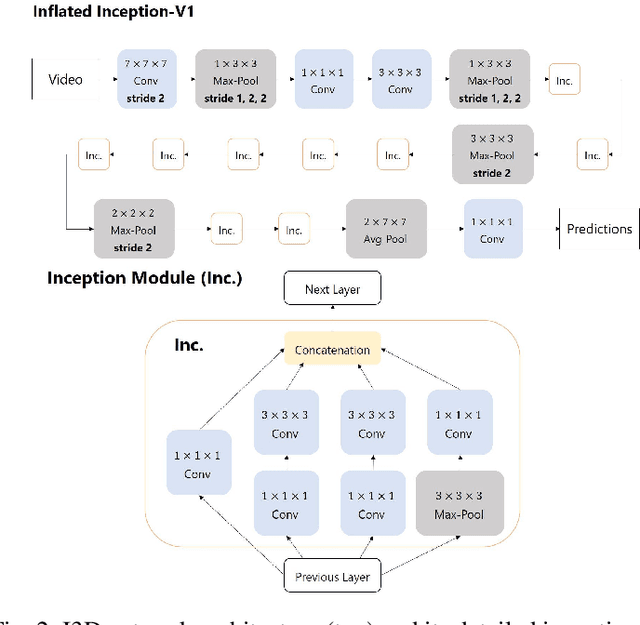
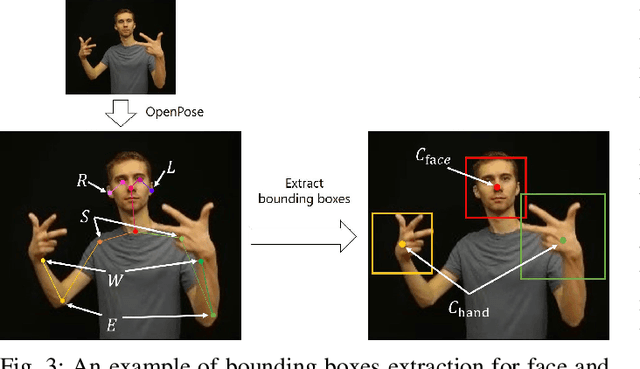
Abstract:In recent years, Word-level Sign Language Recognition (WSLR) research has gained popularity in the computer vision community, and thus various approaches have been proposed. Among these approaches, the method using I3D network achieves the highest recognition accuracy on large public datasets for WSLR. However, the method with I3D only utilizes appearance information of the upper body of the signers to recognize sign language words. On the other hand, in WSLR, the information of local regions, such as the hand shape and facial expression, and the positional relationship among the body and both hands are important. Thus in this work, we utilized local region images of both hands and face, along with skeletal information to capture local information and the positions of both hands relative to the body, respectively. In other words, we propose a novel multi-stream WSLR framework, in which a stream with local region images and a stream with skeletal information are introduced by extending I3D network to improve the recognition accuracy of WSLR. From the experimental results on WLASL dataset, it is evident that the proposed method has achieved about 15% improvement in the Top-1 accuracy than the existing conventional methods.
Distortion-Adaptive Grape Bunch Counting for Omnidirectional Images
Aug 28, 2020



Abstract:This paper proposes the first object counting method for omnidirectional images. Because conventional object counting methods cannot handle the distortion of omnidirectional images, we propose to process them using stereographic projection, which enables conventional methods to obtain a good approximation of the density function. However, the images obtained by stereographic projection are still distorted. Hence, to manage this distortion, we propose two methods. One is a new data augmentation method designed for the stereographic projection of omnidirectional images. The other is a distortion-adaptive Gaussian kernel that generates a density map ground truth while taking into account the distortion of stereographic projection. Using the counting of grape bunches as a case study, we constructed an original grape-bunch image dataset consisting of omnidirectional images and conducted experiments to evaluate the proposed method. The results show that the proposed method performs better than a direct application of the conventional method, improving mean absolute error by 14.7% and mean squared error by 10.5%.
Advances of Scene Text Datasets
Dec 13, 2018



Abstract:This article introduces publicly available datasets in scene text detection and recognition. The information is as of 2017.
ShakeDrop regularization
Feb 07, 2018



Abstract:This paper proposes a powerful regularization method named ShakeDrop regularization. ShakeDrop is inspired by Shake-Shake regularization that decreases error rates by disturbing learning. While Shake-Shake can be applied to only ResNeXt which has multiple branches, ShakeDrop can be applied to not only ResNeXt but also ResNet, Wide ResNet and PyramidNet in a memory efficient way. Important and interesting feature of ShakeDrop is that it strongly disturbs learning by multiplying even a negative factor to the output of a convolutional layer in the forward training pass. The effectiveness of ShakeDrop is confirmed by experiments on CIFAR-10/100 and Tiny ImageNet datasets.
Automatic Generation of Typographic Font from a Small Font Subset
Jan 20, 2017
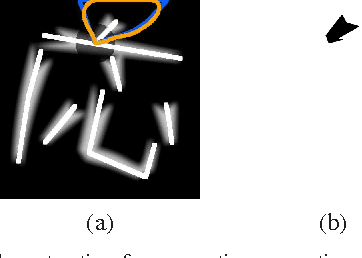
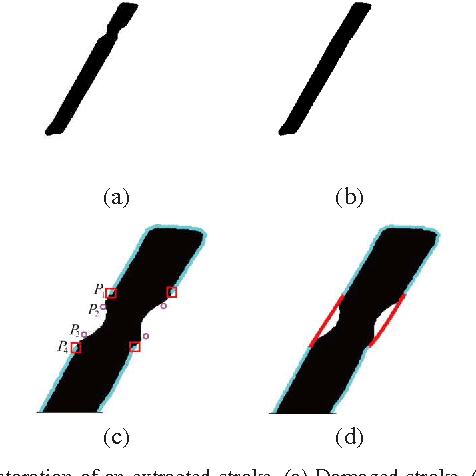

Abstract:This paper addresses the automatic generation of a typographic font from a subset of characters. Specifically, we use a subset of a typographic font to extrapolate additional characters. Consequently, we obtain a complete font containing a number of characters sufficient for daily use. The automated generation of Japanese fonts is in high demand because a Japanese font requires over 1,000 characters. Unfortunately, professional typographers create most fonts, resulting in significant financial and time investments for font generation. The proposed method can be a great aid for font creation because designers do not need to create the majority of the characters for a new font. The proposed method uses strokes from given samples for font generation. The strokes, from which we construct characters, are extracted by exploiting a character skeleton dataset. This study makes three main contributions: a novel method of extracting strokes from characters, which is applicable to both standard fonts and their variations; a fully automated approach for constructing characters; and a selection method for sample characters. We demonstrate our proposed method by generating 2,965 characters in 47 fonts. Objective and subjective evaluations verify that the generated characters are similar to handmade characters.
Deep Pyramidal Residual Networks with Separated Stochastic Depth
Dec 05, 2016



Abstract:On general object recognition, Deep Convolutional Neural Networks (DCNNs) achieve high accuracy. In particular, ResNet and its improvements have broken the lowest error rate records. In this paper, we propose a method to successfully combine two ResNet improvements, ResDrop and PyramidNet. We confirmed that the proposed network outperformed the conventional methods; on CIFAR-100, the proposed network achieved an error rate of 16.18% in contrast to PiramidNet achieving that of 18.29% and ResNeXt 17.31%.
A Generic Method for Automatic Ground Truth Generation of Camera-captured Documents
May 04, 2016



Abstract:The contribution of this paper is fourfold. The first contribution is a novel, generic method for automatic ground truth generation of camera-captured document images (books, magazines, articles, invoices, etc.). It enables us to build large-scale (i.e., millions of images) labeled camera-captured/scanned documents datasets, without any human intervention. The method is generic, language independent and can be used for generation of labeled documents datasets (both scanned and cameracaptured) in any cursive and non-cursive language, e.g., English, Russian, Arabic, Urdu, etc. To assess the effectiveness of the presented method, two different datasets in English and Russian are generated using the presented method. Evaluation of samples from the two datasets shows that 99:98% of the images were correctly labeled. The second contribution is a large dataset (called C3Wi) of camera-captured characters and words images, comprising 1 million word images (10 million character images), captured in a real camera-based acquisition. This dataset can be used for training as well as testing of character recognition systems on camera-captured documents. The third contribution is a novel method for the recognition of cameracaptured document images. The proposed method is based on Long Short-Term Memory and outperforms the state-of-the-art methods for camera based OCRs. As a fourth contribution, various benchmark tests are performed to uncover the behavior of commercial (ABBYY), open source (Tesseract), and the presented camera-based OCR using the presented C3Wi dataset. Evaluation results reveal that the existing OCRs, which already get very high accuracies on scanned documents, have limited performance on camera-captured document images; where ABBYY has an accuracy of 75%, Tesseract an accuracy of 50.22%, while the presented character recognition system has an accuracy of 95.10%.
Scalable Solution for Approximate Nearest Subspace Search
Mar 29, 2016



Abstract:Finding the nearest subspace is a fundamental problem and influential to many applications. In particular, a scalable solution that is fast and accurate for a large problem has a great impact. The existing methods for the problem are, however, useless in a large-scale problem with a large number of subspaces and high dimensionality of the feature space. A cause is that they are designed based on the traditional idea to represent a subspace by a single point. In this paper, we propose a scalable solution for the approximate nearest subspace search (ANSS) problem. Intuitively, the proposed method represents a subspace by multiple points unlike the existing methods. This makes a large-scale ANSS problem tractable. In the experiment with 3036 subspaces in the 1024-dimensional space, we confirmed that the proposed method was 7.3 times faster than the previous state-of-the-art without loss of accuracy.
 Add to Chrome
Add to Chrome Add to Firefox
Add to Firefox Add to Edge
Add to Edge